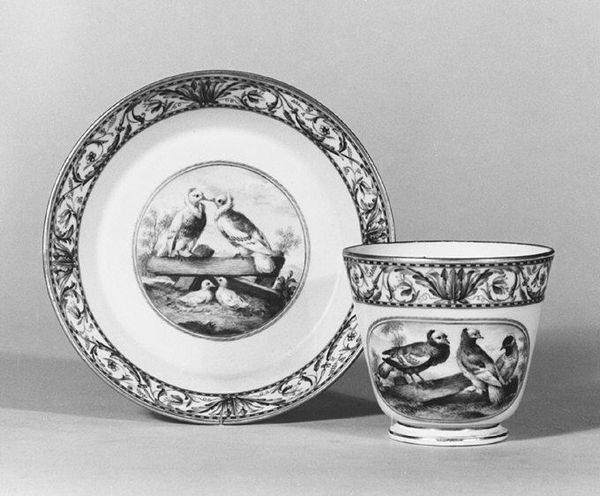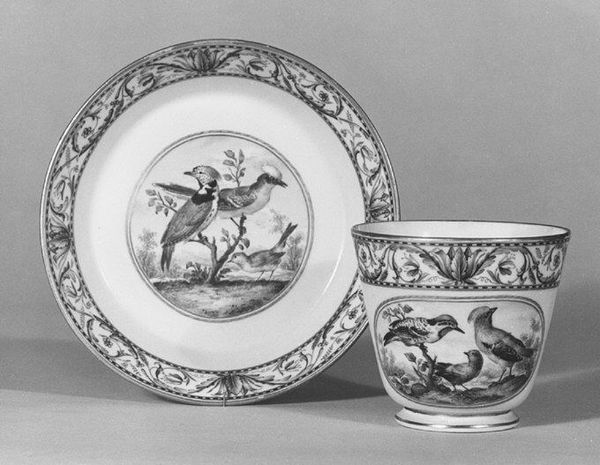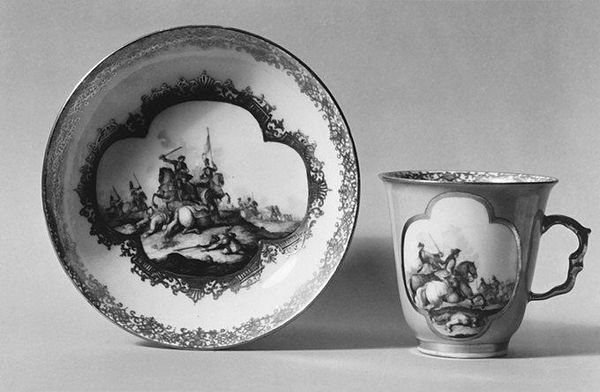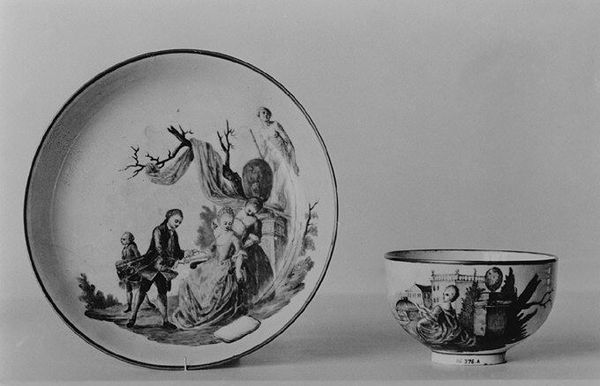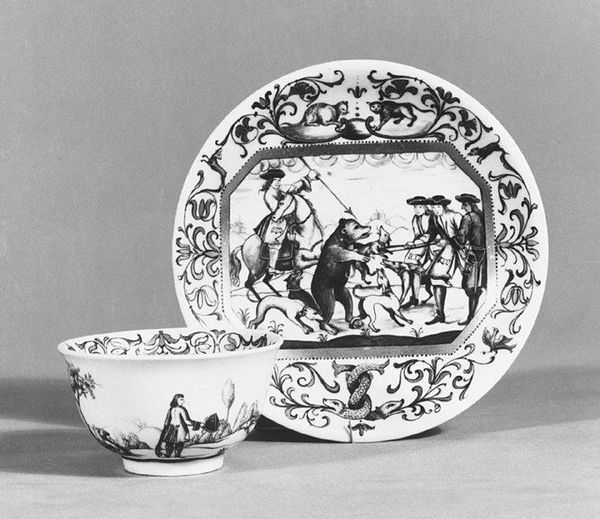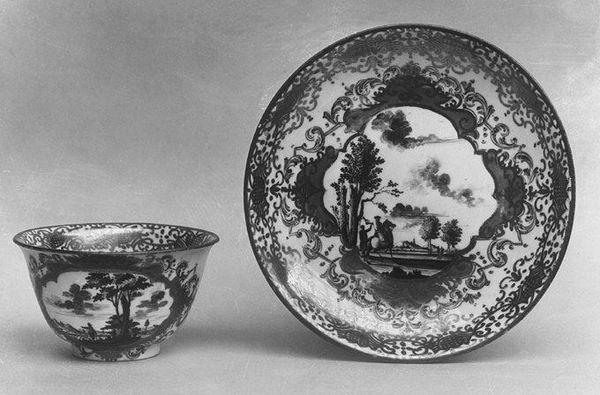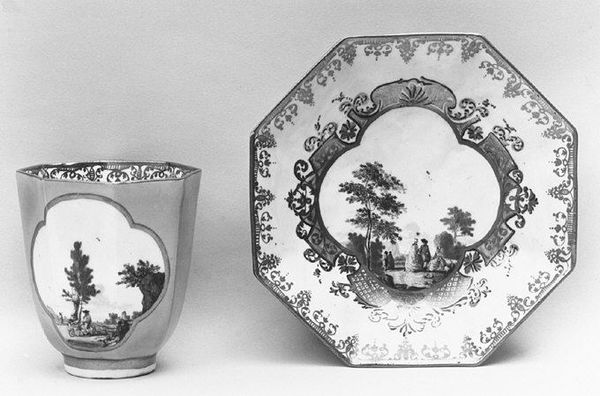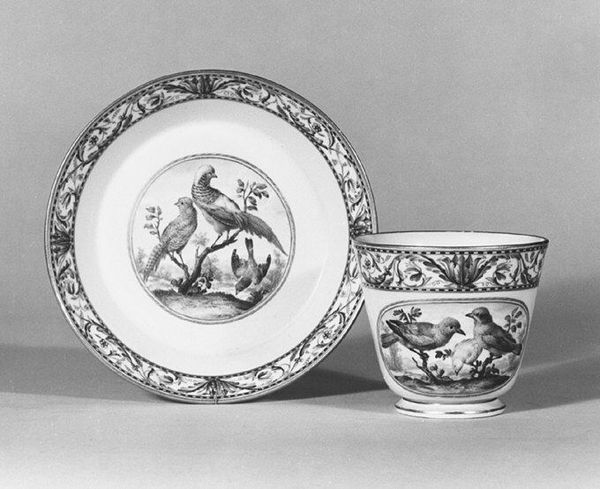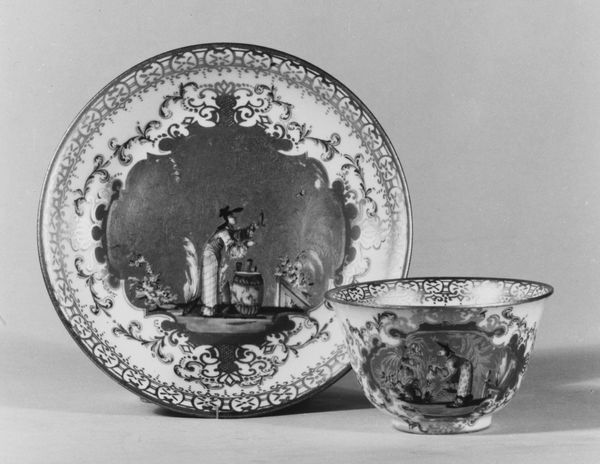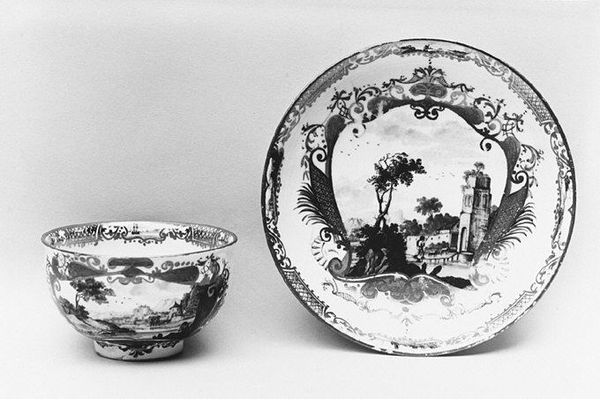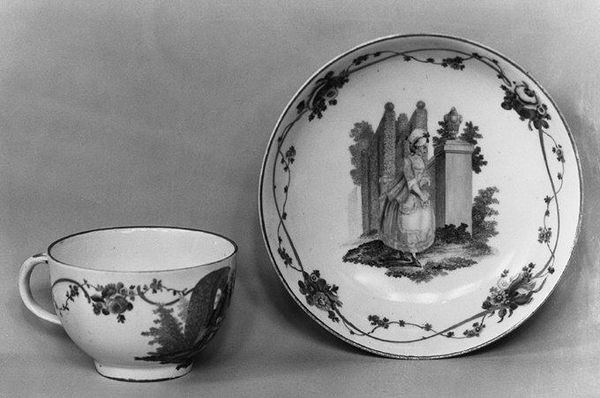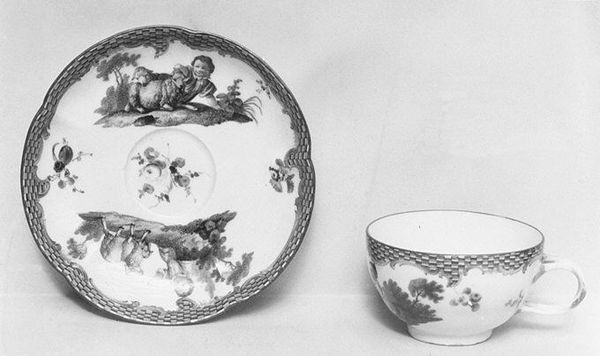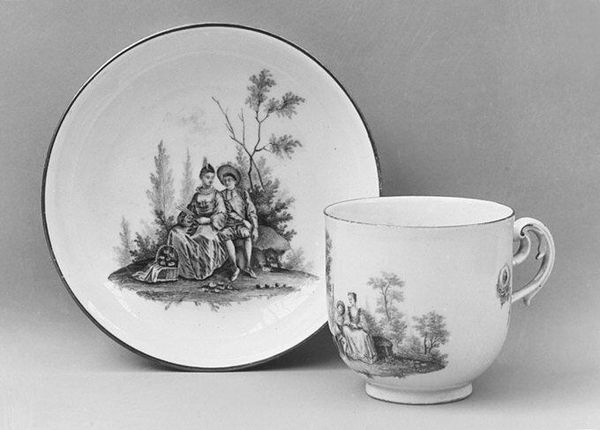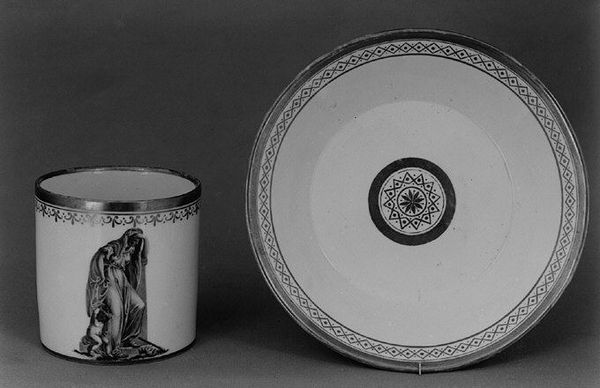
ceramic, porcelain, sculpture
#
portrait
#
neoclacissism
#
landscape
#
ceramic
#
porcelain
#
sculpture
#
genre-painting
#
decorative-art
Dimensions: Height (cup .342a): 3 1/8 in. (7.9 cm); Diameter (saucer .342b): 4 3/4 in. (12.1 cm)
Copyright: Public Domain
Curator: The "Cup and saucer," crafted between 1795 and 1805 by the Wallendorf Porcelain Manufactory, is a delicate exemplar of Neoclassical style, currently residing at the Metropolitan Museum of Art. Editor: The monochrome decoration evokes a subtle, almost ethereal quality. The rendering looks so painterly, as if light is captured on the porcelain surface. Curator: Indeed, the skillful application of paint on porcelain creates this illusion. Both the cup and saucer present central medallions with narrative scenes enclosed within formal borders. We observe a woman kneeling before a cupid, receiving flowers; opposite, a courting couple shares a kiss, all set within serene landscapes. These recall conventional vignettes of genre paintings. Editor: Those landscape scenes strike me; they offer a glimpse into the ideals of that time. Notice how love and nature become entwined; are we to assume these objects suggest domestic harmony? Curator: It's hard not to perceive a thematic undercurrent here. Cupids have been used through centuries as allegories for love. This design embodies neoclassical aesthetics, as if each element, from the delicate floral borders to the central narrative medallions, contributes to an overall atmosphere of refinement and idealised romantic love. Editor: It's the monochrome, for me. Though rendered with subtle tonal variations, the cup and saucer use a visual palette, reducing any distraction that color would otherwise introduce. The classical lines, typical in sculpture, create an exquisite form for this porcelain pair. Curator: From a purely formal viewpoint, the monochrome palette focuses the viewer on the draughtsmanship, and line quality used to define the scene within each circular device. Editor: And it is through the cup and saucer that stories of sentiment, love, and virtue are woven; a moment captured from a much wider play. What intimate lives did this cup and saucer inhabit, I wonder. Curator: Precisely! Such insights provide us a more nuanced understanding of cultural aspirations in late 18th, early 19th century society through the lens of decorative art. Editor: Thinking about visual design elements, coupled with what they stood for at that period adds depth to any encounter.
Comments
No comments
Be the first to comment and join the conversation on the ultimate creative platform.
